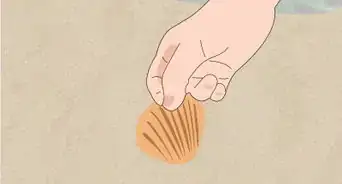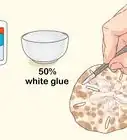This article was co-authored by wikiHow Staff. Our trained team of editors and researchers validate articles for accuracy and comprehensiveness. wikiHow's Content Management Team carefully monitors the work from our editorial staff to ensure that each article is backed by trusted research and meets our high quality standards.
There are 9 references cited in this article, which can be found at the bottom of the page.
wikiHow marks an article as reader-approved once it receives enough positive feedback. In this case, several readers have written to tell us that this article was helpful to them, earning it our reader-approved status.
This article has been viewed 94,377 times.
Learn more...
There are lots of ways to clean beach sand for crafts projects. Sift out rocks and other debris, and rinse away organic matter and silt. If you need sterile sand, try baking it for 45 minutes. Remove salt by simmering the sand with water, then straining it through a coffee filter. To avoid bringing sand home after a beach trip, hit the showers and rinse off toys and other items before getting in your car. In a pinch, baby powder works well as a sand remover. If all else fails, use a handheld vacuum to clean up sand in your home or car.
Steps
Cleaning Beach Sand for Crafts Projects
-
1Gather twice as much sand as you'll need. You'll likely lose some sand during the cleaning process. When you collect sand at the beach, gather twice as much sand as you need for your project. This will ensure you’ll have enough even if you lose some sand when you clean it.
-
2Sift sand to remove unwanted rocks and debris. If you have an old colander or strainer, use it to sift out rocks and other debris from your sand. You can also make your own sifter using tulle and a container. Fasten the tulle to the top of the container with a rubber band, then pour the sand through the fabric into the container.Advertisement
-
3Rinse out organic matter and other unwanted particles. Beach sand is littered with particles of broken shell, microscopic organisms, silt, and other tiny debris. To rinse away unwanted particles, fill a bucket halfway with fresh water. Gradually stir your beach sand into the water, continue to mix it for a few minutes, then slowly dump out the water.[1]
- Drain the water slowly to avoid pouring out too much sand with it.
- Repeat the rinsing process until the water runs clear when you dump it.
-
4Sterilize beach sand by baking it. For an even deeper clean, you can bake beach sand after rinsing it. Drain as much water as possible, then transfer the beach sand to baking sheets. Set your oven to 300 degrees Fahrenheit (150 degrees Celsius) and bake the sand for 45 minutes to sanitize it.[2]
- Beach sand is home to lots of microscopic lifeforms. If you're making something that will be handled a lot, like kinetic sand, it's a good idea to sanitize the beach sand.
- If you want to use beach sand for a hermit crab habitat, you should bake it to sterilize it so your hermit crab isn't exposed to fungus or bacteria.[3]
-
5Remove salt from beach sand by simmering it with water. Pour beach sand into a large pot, then add enough water to cover the sand. Heat the pan until it simmers and reduce heat or add more water if it starts to boil. Simmer for a few minutes to dissolve the salt, then remove the pan from heat and use a large coffee filter to collect the sand.[4]
- Try attaching a coffee filter to a large wide-mouth jar with a rubber band. The coffee filter will strain the sand from the saltwater. Be careful handling the hot pot, and let the water cool until it's safe to touch.
- If you want to mix sand with paint, you should remove salt from the sand first to avoid corroding the canvas or paper over time.
Cleaning Up Sand After a Beach Trip
-
1Line your car seats and trunk with old sheets. Preventing sand from getting into the nooks and crannies of your seats and trunk will save you the hassle of deep cleaning your car after a beach trip. Before you head out for your day at the beach, grab some old bedsheets and line your car’s interior surfaces.[5]
- When you get home, carefully remove the sheets from your car, hang them to dry, then shake them out and wash them.
-
2Rinse sandy items before leaving the beach. If the beach has showers or faucets, use them to rinse away as much sand as possible before getting into the car. Take showers and rinse feet, chairs, toys, and any other sandy items. If possible, shower and change at the beach and store bathing suits in plastic bags.[6]
- If the beach doesn’t have showers or faucets for rinsing, you can bring a plastic foot tub or wash basin to the beach with you. Fill it with water and rinse your feet and sandy objects before getting into the car.[7]
-
3Use baby powder to get sand off your skin. If the beach doesn’t have showers or if you don’t want to take one there, use baby powder to remove sand. Sprinkle your legs, feet, arms, or any other sandy patches with baby powder, then brush it away with a towel.[8]
- Baby powder will work best if your skin isn’t wet.
-
4Hang sandy items outside when you get home. Despite your best efforts keeping sand at the beach, you’re bound to track some home. If possible, avoid bringing sandy towels, bags, and other items into the house, especially if they’re damp. Instead, hang out them outside, then shake out the sand once they’re dry.[9]
- It’s easier to shake out sand from items like beach towels when they’re dry.
- Try painting a peg rail the same color as your house’s exterior and securing it to a wall in your backyard. You can hang towels on it to dry, or hang and rinse beach chairs or flip flops.
-
5Designate one changing area. Try creating a private outdoor changing area by hanging clotheslines and sheets around a spot in the backyard or porch. If that’s not possible and people have to change indoors, choose a room close to an entrance for changing. Lay down a sheet or towel to catch as much sand as possible.[10]
- You’ll have the best chances of keeping sand out of your home if everyone changes at the beach.
-
6Hand wash your bathing suit. Bring your suit to a sink and rinse it with cool water. After rinsing it, fill the sink with cool water and a teaspoon of mild detergent. Let the suit soak for 15 minutes, then drain the sink and rinse away soap residue.[11]
- Machine washing a sandy bathing suit can leave sand in the washer. Further, machine washing can damage many bathing suits, especially women’s swimwear.
-
7Use a handheld vacuum to suck up beach sand. If all else fails, and perhaps inevitably, you might have to vacuum up a sandy mess in your home or car. Your best option is a rechargeable handheld vacuum cleaner. It’ll fit into tight spaces like corners or bottoms of beach bags and, since it’s not bound by a cord, you can easily use it in your car.[12]
Community Q&A
-
QuestionCan you use beach sand safely in a fish tank and what fish will thrive in that environment?
 Community AnswerIt might affect the pH of the water depending on where you got it from. It would be best to buy sand from a pet store or fish store. Snails are and excellent choice for cleaning your tank as they love the sandy substrate. It doesn’t harm them live gravel does.
Community AnswerIt might affect the pH of the water depending on where you got it from. It would be best to buy sand from a pet store or fish store. Snails are and excellent choice for cleaning your tank as they love the sandy substrate. It doesn’t harm them live gravel does.
Warnings
- Taking too much sand from the beach is illegal. It is called sand theft.⧼thumbs_response⧽
References
- ↑ https://www.thoughtco.com/cleaning-sea-sand-to-use-in-a-painting-2577395
- ↑ http://tampabay.citymomsblog.com/2013/09/12/the-beach-make-a-day-of-it-make-a-craft-of-it/#
- ↑ http://www.plightofthehermies.org/adopt/
- ↑ https://www.thoughtco.com/separating-salt-and-sand-4055888
- ↑ https://www.outerbanksvacations.com/vacation-planner/how-to-articles/keep-sand-at-the-beach
- ↑ https://www.outerbanksvacations.com/vacation-planner/how-to-articles/keep-sand-at-the-beach
- ↑ http://lifeasmom.com/summer-fun-how-to-get-the-sand-off/
- ↑ https://www.apartmenttherapy.com/tips-for-keeping-sand-out-of-your-house-after-a-beach-trip-233173
- ↑ http://www.ebay.com/gds/How-to-Clean-Beach-Towels-/10000000178825156/g.html
About This Article
Cleaning beach sand for your aquarium, garden, or art project is relatively easy. Collect twice as much sand as you’ll need, since you’ll probably lose a bit during the cleaning process. To get rid of rocks and debris, sift your sand through a colander or strainer. You can also rinse out the debris. To do this, half fill a bucket with water, gradually stir in your sand, then dump out the water. You might need to repeat this a few times until your sand looks clean. If you want to remove the salt from your sand, pour it into a pot, cover it with water, and heat it on the stove. When it reaches a boil, turn the heat down and simmer it for a few minutes. Then, pour it through a large coffee filter to collect the sand. For more tips, including how to sterilize your beach sand by baking it, read on!

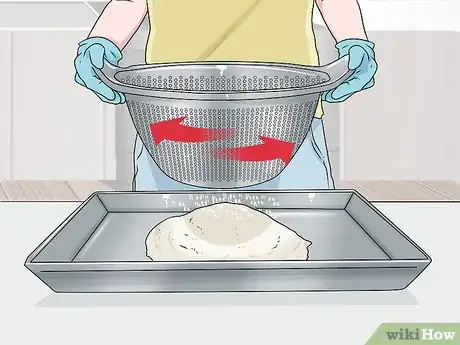
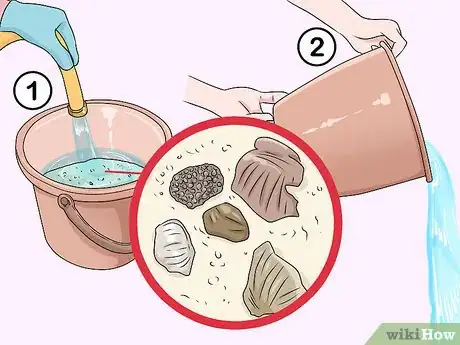
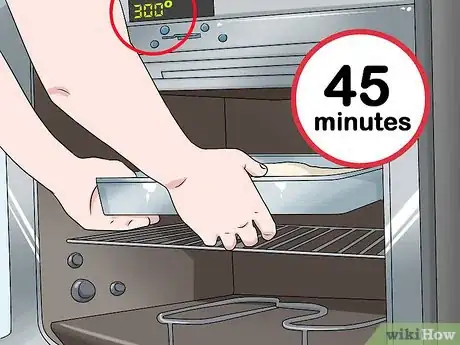
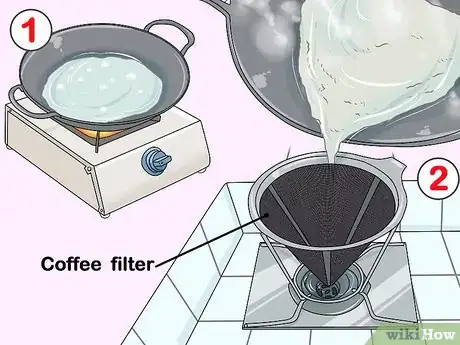
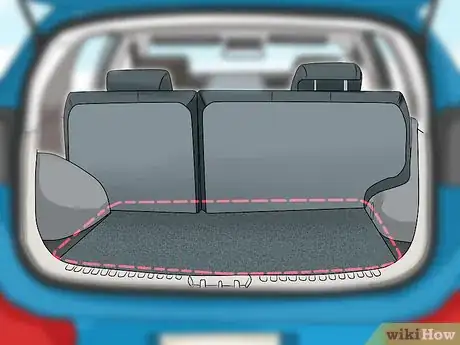

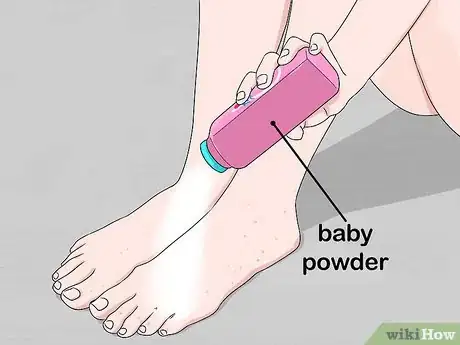

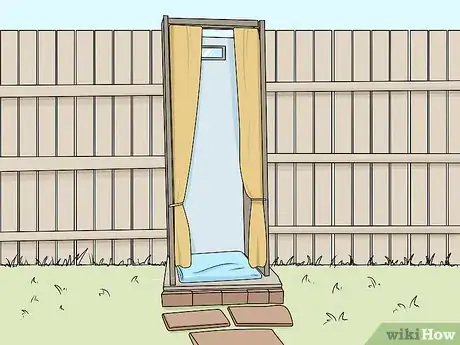
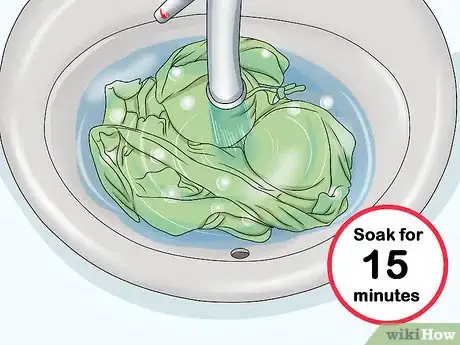
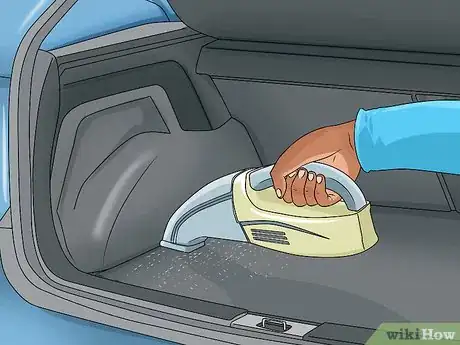










-Step-16-Version-5.webp)
-Step-20.webp)
